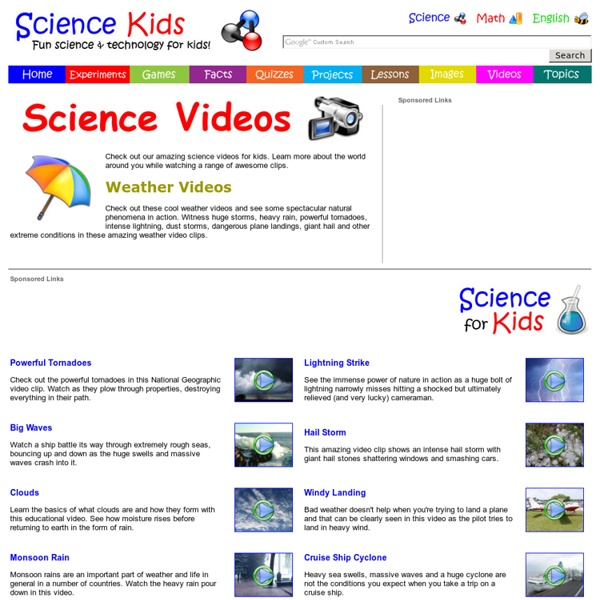



Learning about the Weather - 123ICT Recommended Sites for Teachers Strange and extreme weather conditions around the world have been captured on video and are readily available on several websites. These clips provide an excellent opportunity to engage pupil’s interest and below we have listed our recommendations. The sites are suitable for KS1 and 2 pupils and include a mixture of lesson plans, worksheets, videos, photograph and activities: Metoffice.gov.uk – Includes lots of exciting activities for pupils to help them learn about the fascinating world of weather. National Geographic – A complete Earth climate and weather overview – okay for years 5 and 6 but not younger, it is clear but quite complex language. What is Weather – Pupils – Nice collection of weather images from the BBC which are suitable for younger pupils. What is Weather – Teachers – Weather worksheets and lesson plans from the BBC on the Teachers’ page Weather and people – another excellent resource from the What is Weather site
Interactive Ear tool showing how the ear works by Amplifon The ear is the organ which controls hearing and balance, allowing us to understand our surroundings and position ourselves correctly. It is split into three parts: outer, middle and inner. This guide will take you through each part of the ear in turn, answering those essential questions – what are the parts, what do they do, and how? Pinna Helix Antihelix Concha Antitragus Lobe Cartilage Temporal Muscle (Temporalis) Temporal Bone Semicircular Canals Ganglia of the Vestibular Nerve Facial Nerve Ear Canal (External acoustic meatus) Mastoid Process Internal Jugular Vein Styloid Process Internal Cartoid Artery Eardrum (Tympanic Membrane) Auditory Tube (Eustachian Tube) Outer Ear – Welcome to the Interactive Ear! This is the part of the ear that people can see, and funnels sound into your ear canal. The rim of the pinna. A curved panel of cartridge. Bowl-shaped part of pinna. The small, hard bump above your ear lobe. The earlobe contains a large blood supply, helping to keep the ears warm.
Water cycle in a bowl - Met Office Education Our rain originally came from oceans, seas and lakes. It became clouds and eventually fell on us as rain. What you will need: A large bowl A small yogurt pot or plastic cup Clingfilm Water Small weight or a few coins Sunny window sill What to do: Take the large bowl and fill it with several centimetres of water. You should find that the heat of the sun evaporates the water, which rises, condenses on the cool plastic, and falls into the small container. More Weather experiments There are lots more fun weather experiments that you can do. You will need
The Cat in the Hat . Weather Transformer Game Come play again later! Come play again tomorrow!